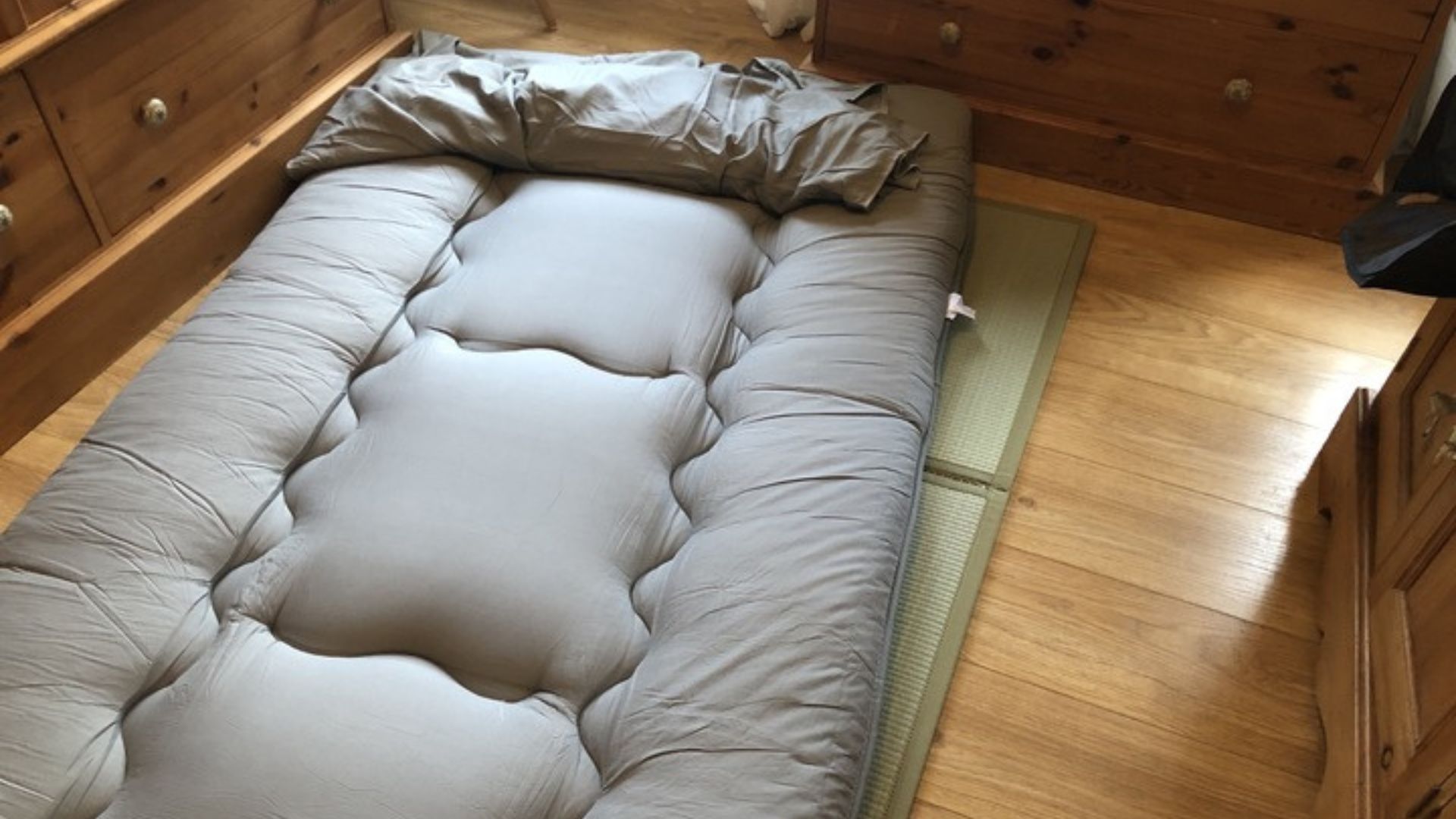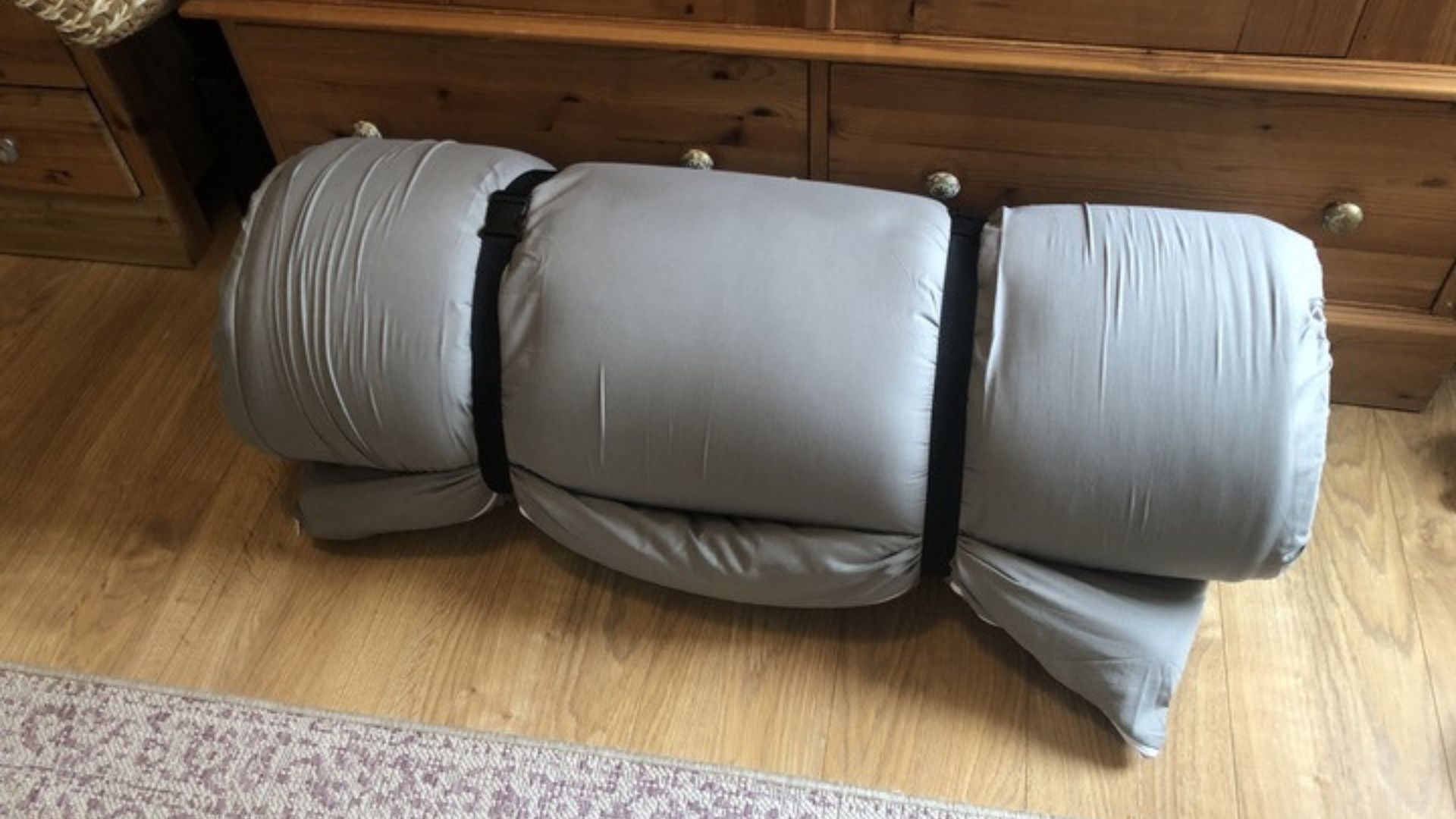
As a sleep writer, I know how important the right mattress is for a good night’s sleep – but can even the best mattresses provide all the proper support, comfort, and relief you need at night, even without a bed base? Maybe, but there's a more convenient option for sleeping on the floor.
I’m talking about traditional Japanese floor mattresses. These practical beds have been a staple in Japan for centuries, and their foldable design means they're great for guests, small homes, and moving days.
But are Japanese floor mattresses right for you? Here, I’ll discuss what these space-saving mattresses are, who they’re for, and why you should (and shouldn’t) get your hands on one.
What is a Japanese floor mattress?
A Japanese floor mattress (or shikibuton) is a rectangular, quilted pad resembling a slim memory foam mattress. It has a thin, foldable design that's easy to set up and put away when you're not sleeping. In Japan, it's typically laid out onto a type of straw mat called tatami to add some comfort and absorb moisture to keep the floor mattress dry.
This type of bed is often used by overnight guests or those who’ve just moved into an unfurnished space. It's also an economical alternative to a traditional Western-style mattress.
Is it the same as a Japanese futon?
Yes, Japanese futon mattresses are often called Japanese floor mattresses to distinguish them from Western-style futons, (or simply “futons” in the US). Despite that, the standard definition of a futon reflects the Japanese-style futon. Its Westernized counterpart is several inches thicker, less compact, and bears more resemblance to a sofa bed.

Are Japanese floor mattresses healthy to sleep on?
According to Healthline, Japanese floor mattresses tend to be firmer than traditional beds. Their naturally firm support promotes deep sleep through natural spine alignment, improved blood circulation and posture, and relief from muscle aches and stiffness.
Healthline also points out that authentic Japanese floor mattresses are often free from synthetic materials and flame retardants (such as potentially dangerous flame retardant fiberglass), and are made from non-toxic hypoallergenic materials.
Benefits of a Japanese floor mattress
✅ It's great for small spaces: With a thin, foldable design that doesn’t require a bed frame, a Japanese floor mattress is a space-saving sleep solution for smaller houses, studio apartments, and tiny bedrooms. Once you’re awake, simply roll it up, put it away, and enjoy the freed-up space during the daytime.
✅ It's easy to accommodate guests (or travel with your bed): The practical, compact design of a Japanese floor mattress allows you to host unexpected overnight guests – or relocate to a different house, apartment, or dorm room with your bed in tow.
✅ You need a firmer, cooler bed: The firmness of Japanese floor mattresses makes them a good choice for back and stomach sleepers who need sufficient support for their lumbar and hips. Meanwhile, the light, breathable materials and proximity to the floor will create a cooler surface, which could help hot sleepers.

Drawbacks of a Japanese floor mattress
❌ You need to clean it often: While a Japanese floor mattress is much easier to clean than a traditional bed, you need to air it out regularly –preferably outdoors in direct sunlight to kill bacteria and prevent moisture buildup. This won't be easy if you don’t have a yard or you live in a wet climate.
❌ You need a place to store it: A Japanese-style futon is convenient for creating space in your living room, bedroom, or studio apartment as long as you have somewhere to put it. Plus, if you’re not fond of making your bed, putting away and setting up your futon can become a hassle.
❌ You need a plush mattress: Side sleepers and lighter bodies benefit from the soft, sink-in feeling of a plush bed, so you may find a futon too firm and uncomfortable.
Do you need a bed base with a Japanese floor mattress?
No, you don’t need a bed base for your Japanese floor mattress. You can put it directly on the floor and save money and space.
However, the Japanese futon’s portable design means they can be placed anywhere, including a bed frame. If you don't have a tatami, a low platform bed base will work, as will a base with slats for proper ventilation.

Should you put a mattress directly on the floor?
We don't recommend it. A mattress that's directly on the ground will be exposed to more dirt, which could lead to allergen buildup. Plus, the restricted air circulation will lead to moisture, creating an environment for mildew and mold. A traditional Japanese floor mattress is usually paired with a straw mat to add airflow and comfort to hard flooring.
Also, be careful with a floor mattress if you have mobility issues. Getting up and down onto the floor may create comfort or inaccessibility.
Where to buy Japanese floor mattresses
There are many places to buy a Japanese floor mattress online, with futons from top-rated futon brands being available on Amazon. Floor bedding brands FULI and MAXYOYO boast thousands of positive reviews on Amazon and are currently the most popular futon sellers on the site.







